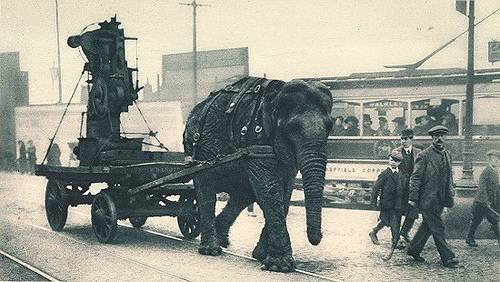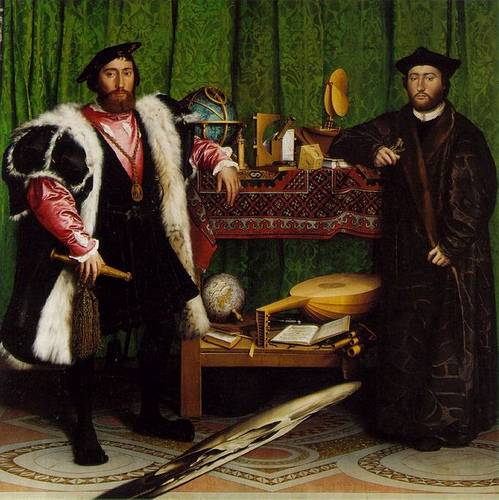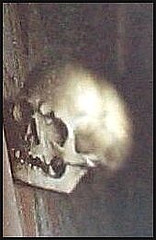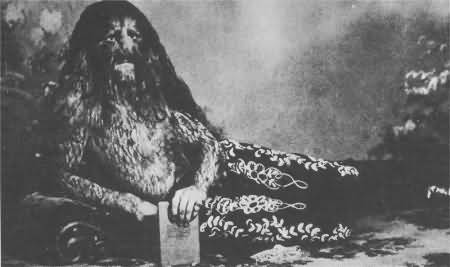In 1911, three murderers were hanged on Greenberry Hill, London.
Their names were Green, Berry, and Hill.
In 1911, three murderers were hanged on Greenberry Hill, London.
Their names were Green, Berry, and Hill.

This is the most isolated tree on Earth, the “Tree of Ténéré,” a single determined acacia that grew alone for decades in the Sahara in northeastern Niger. There were no other trees for more than 400 kilometers; it was the only tree to appear on maps of the area, even at a scale of 1:4,000,000.
“What is its secret?” wondered a French commandant in 1939. “How can it still be living in spite of the multitudes of camels which trample at its sides? How at each azalai does not a lost camel eat its leaves and thorns? Why don’t the numerous Touareg leading the salt caravans cut its branches to make fires to brew their tea? The only answer it that the tree is taboo and considered as such by the caravaniers. … The acacia has become a living lighthouse; it is the first or the last landmark for the azalai leaving Agadez for Bilma, or returning.”
What could bring down such an exalted spirit? Believe it or not, it was hit by a truck. Twice. The first instance, in which a lorry headed to Bilma detached one of its two trunks, happened apparently in the 1950s. The noble tree struggled on for 20 more years before it was knocked down by an allegedly drunk Libyan driver in 1973. The dead tree was taken to the Niger National Museum in Niamey; today it’s been replaced by a simple metal sculpture. (Image (c)2001 Peter Krohn)
In the 1840s, John Banvard painted a panorama of the Mississippi River valley — possibly the largest painting ever attempted. It was 12 feet high and 1,300 feet long.
He traveled with it through Europe, Asia, and Africa, and Queen Victoria even got a private viewing.
Improbably, it’s been lost. How do you misplace a painting that’s a quarter mile long?
You always know when it’s 11 a.m. at Memphis’ Peabody Hotel: Five ducks are escorted from their penthouse suite, down the elevator to the lobby, along a red carpet (accompanied by a Sousa march), and into the fountain, where they spend the day. At 5 p.m. they return, with equal ceremony.
This has happened every day since the 1930s.

Short on human help, England enlisted another species at its Sheffield munitions plant during World War I.
Write your own joke.
For a time in the 1880s, a baboon named Jack was employed as a railroad signalman in South Africa. He was working, apparently successfully, as a voorloper, or ox driver, in the Eastern Cape when he was discovered by James Erwin Wide, a Uitenhage signalman who had recently lost his legs in an accident.
Impressed and needing a helper, Wide bought the baboon and trained him to operate his junction. When a train approached it would identify itself with a whistle; Jack would get the keys, head into the signal box and pull the correct lever to change tracks. Alarmed riders complained, but railway management investigated and were so impressed that they actually put the baboon on a railway allowance and rations, including a small amount of brandy per day.
I know this sounds preposterous, but there are photographs of Jack at work and eyewitness accounts of his abilities. His skull can be seen today in the Albany Museum in Grahamstown.

Self-portrait by Sarah Biffen (1784-1850), a Victorian painter who had no arms.
She painted this with her mouth.

This is The Ambassadors (1533), the celebrated painting by Hans Holbein the Younger. It’s full of noteworthy symbols of exploration, but what’s that odd skewed element at the bottom?
If you view the canvas from a narrow angle, the image resolves into a skull:

This is an early example of anamorphic perspective, an invention of the early Renaissance. It’s thought that Holbein intended that the painting would be hung in a stairwell, when people ascending the stairs would view the image from the proper angle and get a gruesome surprise.
Why? That’s an unanswered question.

“Jo-Jo the Dog-Faced Boy” was presented to sideshow audiences as a freak of nature, raised by a savage in a Russian cave and prone to barking and growling incoherently when upset.
In reality, Fedor Jeftichew was born in St. Petersburg in 1868, and he spoke Russian, German, and English. His appearance was due to a medical condition called hypertrichosis, or excessive hair growth, the same disorder that produces “bearded ladies.”
Jeftichew inherited the condition from his father, Adrian, who had performed in French circuses. When his father died, Fedor eventually signed with an American show, going on to tour Europe and the United States extensively. He died in Turkey in 1904.
In 1898, Columbus prison inmate Charles Justice helped build and install Ohio’s only electric chair.
Justice finished his sentence and returned to society, but irony caught up with him. Thirteen years later he was back in prison, and on Nov. 9, 1911, he was executed in the same electric chair he had helped to build.